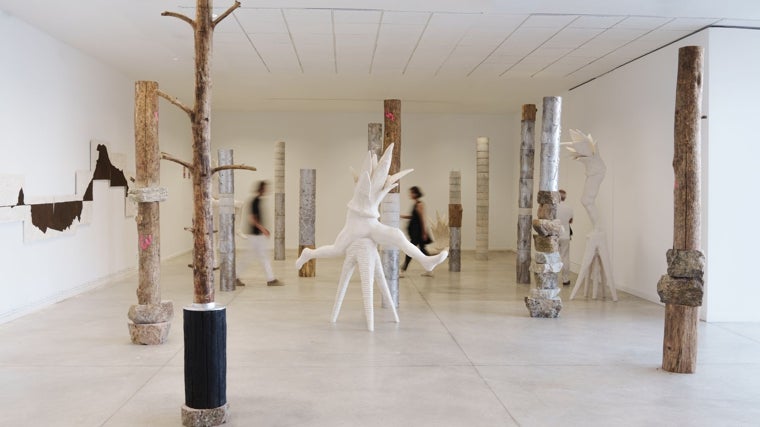The Alcobendas Art Center inaugurates "Itineraries of Resistance: 58 were 83" by Mariano J. Vilallonga

Tomorrow, sculptor and painter Mariano Jerónimo Vilallonga opens his new exhibition, "Itineraries of Resistance: 58 Were 83," an artistic project that transforms a physical and symbolic journey into a sensitive, poetic, and sculptural cartography. This exhibition will be open to the public at the Alcobendas Art Center until September 7, 2025, offering an immersive and reflective experience for nearly two months, centered on displacement, landscape, and memory.
Conceived as a gesture both poetic and physical, this proposal was born from the artist's personal attempt to trace and travel a straight line, imaginary but intentional, between two shelters: one located in the city and the other nestled in the mountains. The idea was not to deviate, to maintain the pure, direct line. This ideal route, represented by the number 58, was soon challenged by the irregularities of the real territory, which transformed it into a different, longer, and more complex path: number 83. This new route was shaped by unexpected obstacles, unavoidable decisions, forced detours, and the memory of the terrain itself, which turned it into an act of resistance against linearity and planning. "This exhibition is the fruit of my previous work, which was closely related to everything related to nature and the artificial," the artist explains to ABC.
The artist acknowledges that the learning he's gained from this project is influenced by the path itself. "In the end, this is an exhibition that emerges from a path, not an exhibition that emerges from your head. The path itself dictates how everything should be, and in dictating it, it exposes you to new materials and new ways of creating things you've never worked with before." Throughout the project, he's learned to work with aluminum, concrete, wood—all these materials. Stone, for example, he'd never used before, and it's been a learning process, above all, about materials and physical labor. There's also been mental learning, although to a lesser extent: "You learn to see the world differently. To see how small the world is, because you begin to calculate distances differently. You learn to measure through the human body, which is something I don't think anyone learns from books or information."
 'Itineraries of resistance: 58 were 83'
MV
'Itineraries of resistance: 58 were 83'
MV
In the exhibition space, this entire life experience takes concrete form through a "forest" of totem columns, vertical structures that condense materials collected by the artist during that journey. Each column is a kind of container for traces, residue, and fragments of the journey. These pieces are accompanied by four monumental sculptures, also made by Vilallonga, which represent different states of body and mind during the journey: walking, falling, watching, and resting. Furthermore, an extensive cartographic mural narrates, through silences, voids, fragments, and interrupted lines, both what was traveled and what could have been.
The exhibition is also a profound reflection on the reconciliation between nature and the city, between mud and cement, between the wild and the constructed. And, above all, it is a meditation on walking as a form of thought, of silent resistance, and of connection with the environment.
ABC.es



